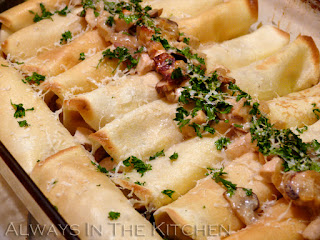
I'm a big believer in breakfast, as you may have noticed. However, like everyone else, on workdays I'm usually just trying to get out the door on time, preferably with everything I need and wearing matching socks. High standards, I know.
My weekday at-home breakfast is generally a cup of coffee and a piece of toast with something on it (usually cheese, sliced tomatoes, or avocado). Not really the sort of thing that can carry you all the way through your busy morning, but easy to knock together while you're waiting for the coffee to brew. I save the more elaborate breakfasts for the weekend - Monday to Friday, my solution is to rely on a baseline of toast and cheese and then supplement my morning with planned snacks - fruit, almonds, yoghurt - that sort of thing.
Packets of oatmeal are another solution. Not being a fan of paying huge amounts of money for things I can easily and cheaply make myself, I tend to make my own.
Another reason that I don't generally buy the store-bought packets is that the sweet ones are too sweet, the oatmeal is usually cut too fine (and becomes paste-textured, as a result), or they taste artificial to me (even if they're not).
Sometimes I make a bunch up for the week, and sometimes I just make one for the day that I need it. Because it's easy.
My current favourite is Coconut Apricot Oatmeal, but I also like using dried sour cherries and clove, or plain raisins. If you have a bunch of little containers like these (or even sealable plastic bags) it's easy enough to make your own variety pack. Like maple? Use maple sugar. Like walnuts, or almonds, or pumpkin seeds? Toast 'em up and add them to your mix (you'll want to slice or chop the nuts so the pieces are not too big). In fact, maple sugar and toasted walnuts sounds like a pretty tasty option. Go easy on the amount of nuts if you don't want the calories to stack up, though.

Here is the formula:
Coconut Apricot Oatmeal
Serves 1 (makes one packet)
40 grams quick oats (not instant), or old-fashioned rolled oats
1 tablespoon unsweetened coconut
3 dried apricots (scizzored into bits)
1 tablespoon raw sugar
teeny tiny pinch of salt (literally, about 10 grains of kosher salt)
If you are a fan of spices in your oatmeal, you may also want to add a pinch of cinnamon, or ginger, or nutmeg, or other spices (or blends) in the apple/pumpkin pie family. I usually leave them out of this one, because I think they mask the coconut flavour too much, but your mileage may vary.
To make up, empty the contents into a microwave-safe bowl, and add boiling water to about an inch above. Microwave on medium or low power (keep an eye on it - even in a large bowl, it can try to crawl out and down the sides, if the heat is too high or goes on too long). You can add more water if it looks too thick.
If I am using quick oats, it usually only takes about a minute or two at 50% power, then I give it a quick stir and drag it back to my desk. By the time it has cooled enough to eat, it is completely cooked. You can add milk or cream, if you like (I don't - I've never gone for milk on my porridge).
An online recipe calculator gave the results of this recipe at around 160 calories, which is about perfect for a mid-morning snack for me. If you want something a little lighter - use less. Use 30 grams of oats, 2 teaspoons of coconut, 2 apricots. Or just divide the above amount into two containers - the directions are the same.

The ready-to-eat picture doesn't do it justice; camera phone, lousy office-tower lighting, and utterly uninspiring placemat. But it tastes so good.

















































